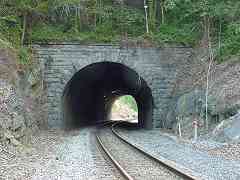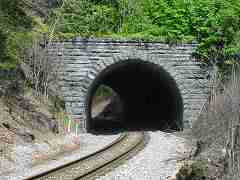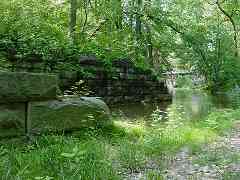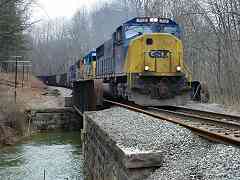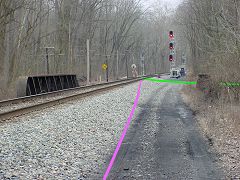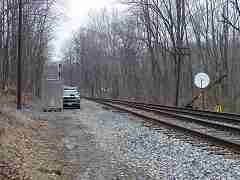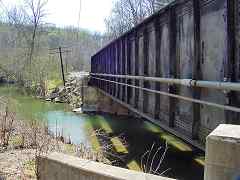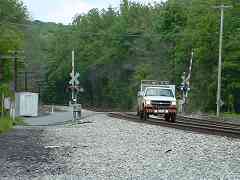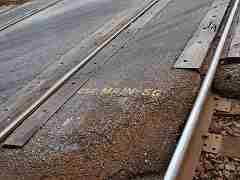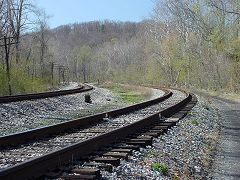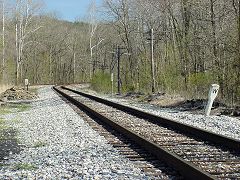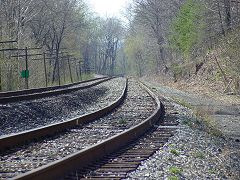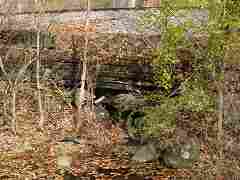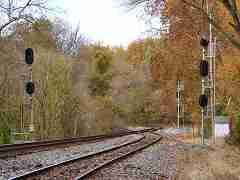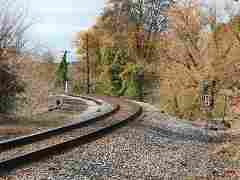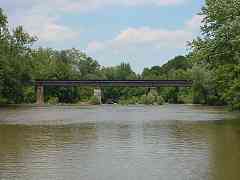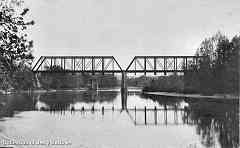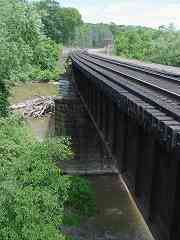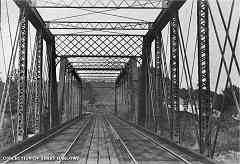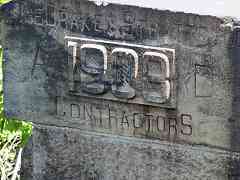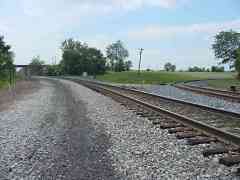|
The Monocacy River might be the OML's most substantial water crossing.
This bridge was a favorite target during the Civil War, and B&O
had to rebuild it many times. The original bridge was a covered wood
variety, but wooden bridges were easily set afire, so B&O tried
iron Bollman bridges, but even they were not permanent.
Here are some entries from B&O's annual reports of that turbulent
period:
September 8, 1862: The splendid iron suspension bridge at Monocacy blown
up by the enemy. The water station at Monocacy, including pump house
and engine, also burned.
September 15, 1862: Commenced removing debris of Monocacy bridge. This
vicinity was the camping ground of the Confederate army, and before
operations could be commenced at the bridge, dead men, horses
and cattle had to be buried.
September 17, 1862: Monocacy trestling commenced; crossed trains over
at 11 AM September 21.
September 25, 1862: The water station at Monocacy was rebuilt during
the month.
April 24, 1863: Monocacy River higher than for many years.
June 3, 1863: Rumors of an advance of the enemy; no freight trains
ran west of Monocacy until night.
June 18, 1863: All the engines and cars sent from Frederick to Baltimore.
Frederick train went into Frederick and returned to Plane No. 1 for safety,
and went again to Frederick on morning of the 19th for passengers.
June 20, 1863: Frederick train went only to Mt. Airy; the enemy in Frederick.
June 21, 1863: The enemy at Mt. Airy. Track torn up at Mt. Airy and
telegraph wires cut at midnight and repaired next morning.
July 2, 1863: Trains running to Frederick. (Further north, the Battle
of Gettysburg was in full swing.)
January 21, 1864: Commenced the erection of the east span of the Monocacy
iron bridge and completed it on the 25th.
Link:
Battle of Monocacy Junction
| 